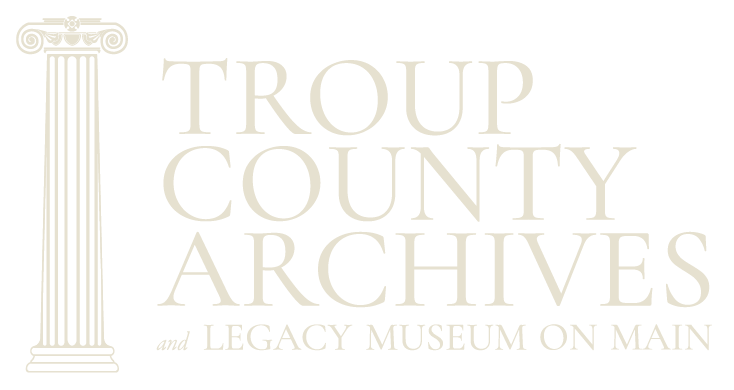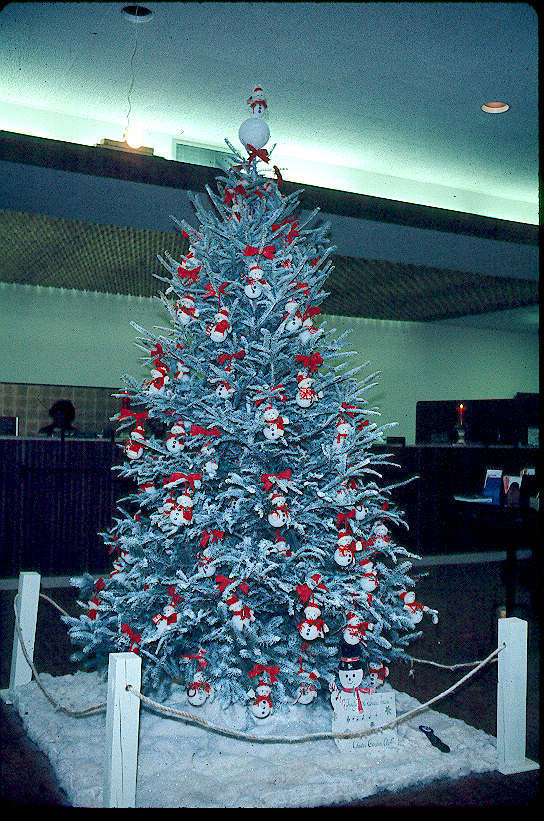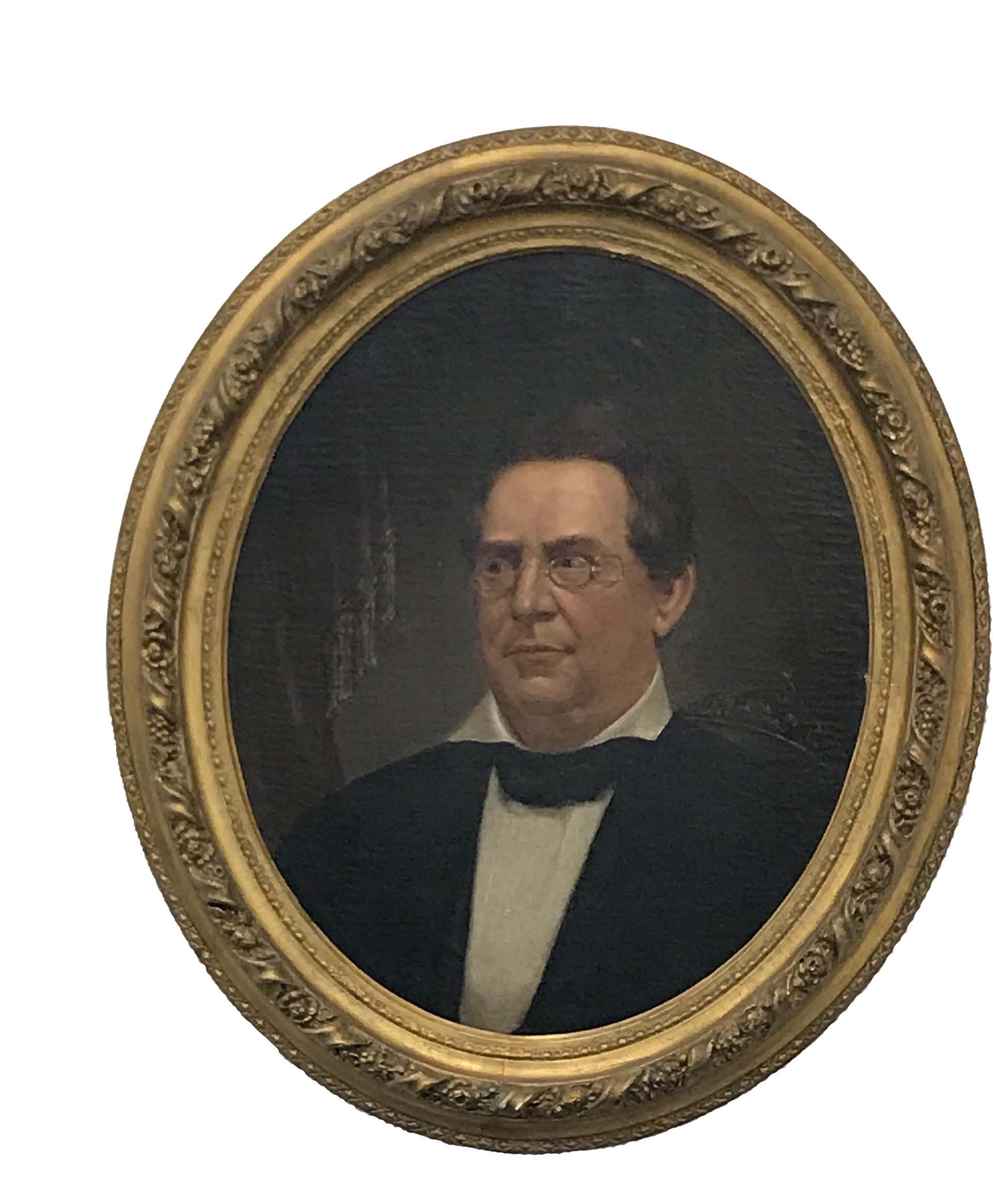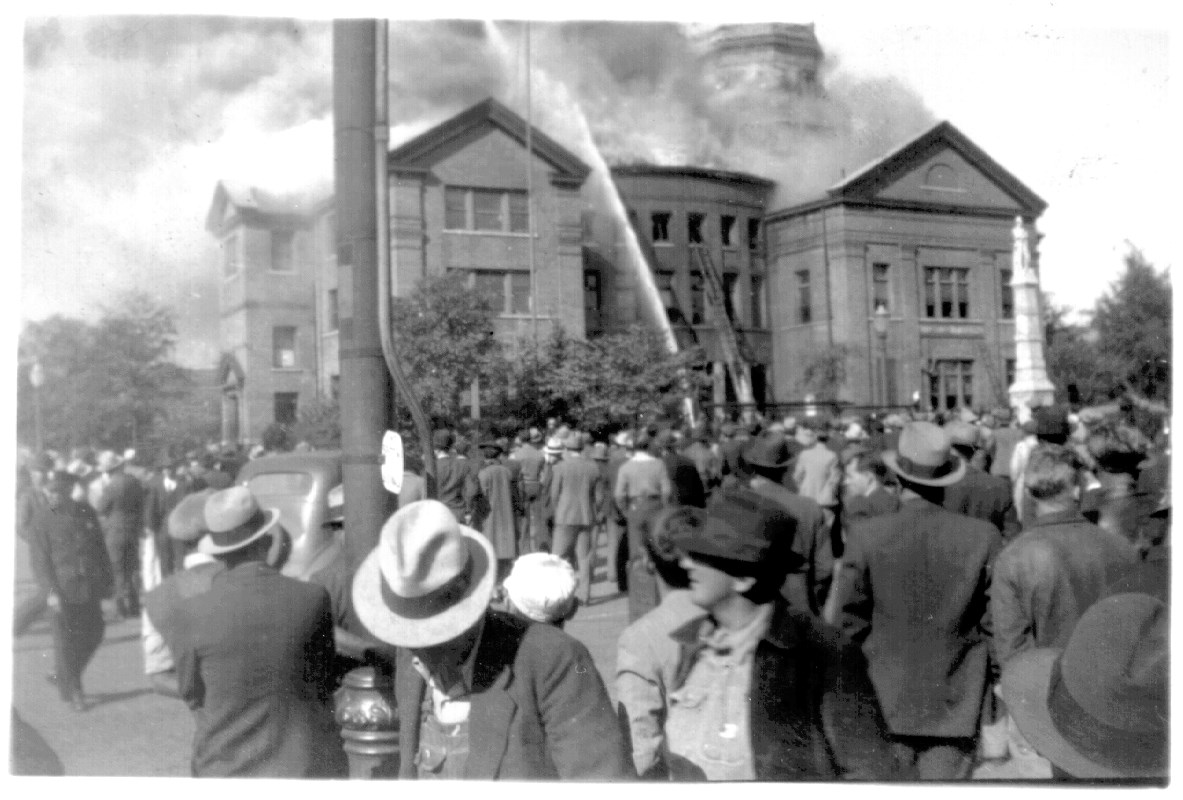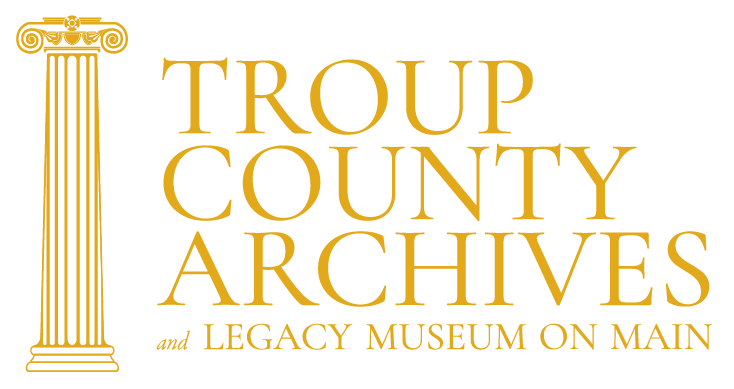We southerners have long loved our football, especially the SEC. But did you know that many cultures, including ancient Europeans, the early Romans, and even Native Americans, played games similar to modern American football? The Ancient Greeks played a similar sport called Episkyros where two teams of twelve men tried to throw a ball over a scrimmage while avoiding being tackled. It may have been only play, but at least in Sparta, the game was quite violent, as the teams exchanged possession of the ball often until one team was forced behind their own line. Sound familiar?
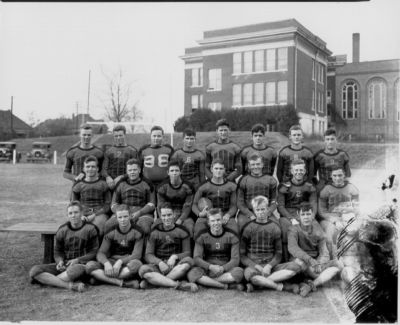
The LaGrange High football team poses sometime in the 1930s. TCA Col-lections.
Romans picked up this game and it spread throughout Europe. These archaic forms of football were often called mob football. Played between neighboring towns and villages, with an unlimited number of players on opposing teams, the two heaving masses of people struggled to drag an inflated pig’s bladder by any means possible to markers at each end of the town. By some accounts, any means necessary were used to move the ball towards the goal as long as no one died. These almost-deadly games went into sharp decline when the Highway Act of 1835 was passed by British Parliament, banning mob football from being played on public highways.
Similar games were adopted in the United States and were just as dangerous. A Harvard tradition known as “Bloody Monday” began in 1827 and consisted of a mass ball game between the freshman and sophomore classes. The rules were simple and violence and injuries were frequent. In 1860 town police and college authorities agreed that Bloody Monday needed to end. It was more than a dozen years before football was played at Harvard.
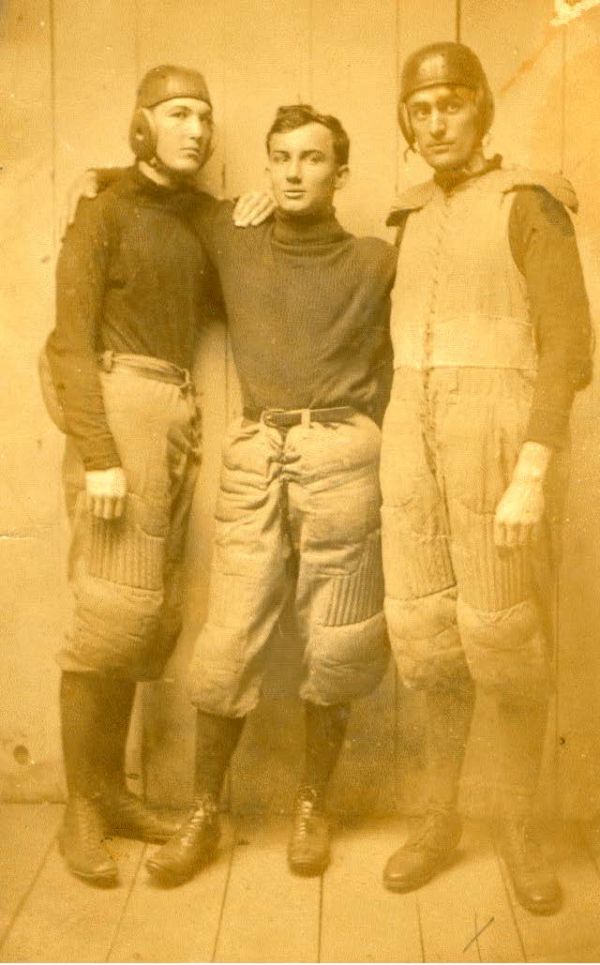
Reuben S. O’Neal (far right) and two of his team-mates ready for a game in 1908. O’Neal attended UGA Medical School. TCA Collections.
The sport we play now in the United States is more properly called gridiron football, for the vertical yard lines that mark the field and is a byproduct of those mob games and two English sports – rugby and soccer. The first known collegiate football game was played on November 6, 1869, when Rutgers University challenged Princeton (still known then as the College of New Jersey) to a game that was played with a round ball. It didn’t take long for other colleges to see the fun in the sport and pick up a ball to throw around. Harvard’s authorities let their boys play again in 1872.
A local favorite around here, the University of Georgia first picked up that ball on January 25, 1892, when they played Mercer University in Athens. Just a few weeks later, the Bulldogs traveled to Atlanta to play Auburn University’s team in what was to become the South’s oldest college football rivalry, and what many sports historians consider to be the birth of Southern football. Georgia Tech and the University of Alabama fielded teams that same year as well. By 1932, the Southeastern Conference was created and has been a powerhouse ever since.
Of equal interest is the origin of teams’ mascots. There have not always been such proud lines of perfect English Bulldogs to represent the University of Georgia. In fact, the mascot on the sidelines of that first game in 1892 was a goat. It was not even named as it was simply called “The Goat.” UGA’s first canine mascot came along two years later but was a Bull Terrier named Trilby. There were a few other dogs of varying pedigree before Uga I first walked into Sanford Stadium. The line of English Bulldogs known as Uga first began in 1956 when Sonny Seiler brought a bulldog to Georgia’s first home game of the season. After that game, head coach Wally Butts asked Seiler’s permission to use the dog as Georgia’s mascot. As they say, the rest is history as the current mascot is Uga X. The nine previous Ugas lay entombed in a mausoleum just outside the stadium.
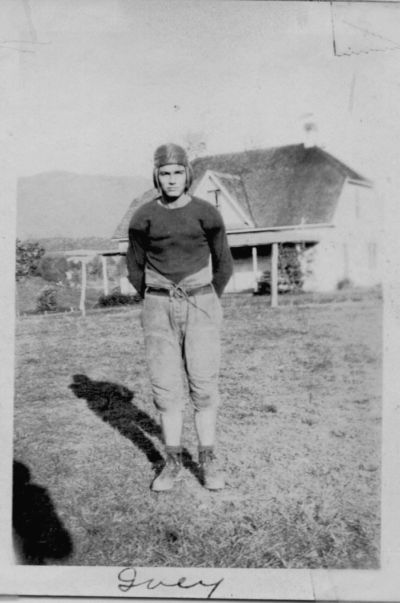
Ivey Gaines West in football uniform in yard, 1935. TCA Collections.
Georgia Tech’s Ramblin’ Wreck, a 1930 Ford Model A sport coup is the official mascot of the school. It is painted gold to match the Yel-low Jackets’ colors, though. The current Ramblin’ Wreck debuted in 1961, though it is not the first Ford on campus. Floyd Field, a professor and dean at Georgia Tech in the early 1900s, owned an original 1916 Ford Model T that was infamous on campus. The student newspaper, The Technique, dubbed it a Ramblin’ Wreck in 1927, and the name stuck. A few years later, The Technique sponsored a series of road races from Atlanta to Athens that were hazardous at best and illegal at worst. Field, who had been a participant in the races, thought parades would be safer and led the first Ramblin’ Wreck Parade in 1932.
As interesting a tale as the Ramblin’ Wreck is, the story of Auburn University’s War Eagle goes back even further. Legend has it that the first War Eagle was found wounded after the Battle of the Wilderness during the Civil War. After nursing the eagle back to health, the Confederate soldier who found the eagle eventually became a professor at Auburn. In that first 1892 football game against Georgia, the War Eagle broke away from the professor and circled high above the field while the Tigers drove down the field for the winning touchdown. Following the victory, the War Eagle fell to the ground and died, forever immortalizing the story.
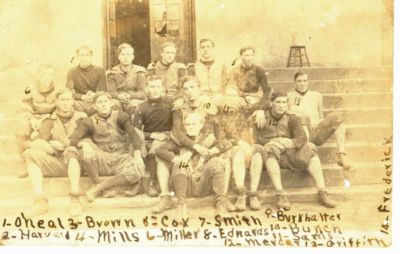
Almost all of TCA’s 40,000 images have been donated. Many images of UGA ’s and LaGrange High’s team, while only a few of other teams exist. O’Neal’s entire team is written onto this image.
TCA Collections.
Given there were as many as fourteen high schools operating in Troup County at one time, it would be a lengthy tome to cover each school, but local boys saw how much fun the sport of football could be and were determined to play. According to local newspapers, LaGrange High School was the first to attempt a football team when they fielded their first team in 1886. Its teams were coached by students and volunteers until 1916 when Henry E. Newton, Jr. was named the first coach of the then “LaGrange Blue Veterans.” Their team name changed and the Grangers won their first state championship in 1921. Troup County High School was not formed until 1956 but had a football team that very year and have also played well since that time. Hogansville’s Green Waves and East Depot’s Wolverines produced strong teams as well until consolidation and integration redesignated those students to other schools. Young boys wanted to play, too, so rec league teams have always been popular for younger athletes. The Callaway Education-al Association sponsored Midget football for the first time in 1947.
The first local to play for a college team was Hatton Lovejoy who played for the University of Georgia’s team in 1896. Since then, more than 200 local boys have excelled in the sport and played for colleges across the country and a few NFL teams, too. More recently, local high schools have begun producing such strong athletes that it isn’t uncommon to hear that coaching greats like Nick Saban and Kirby Smart are in town to meet players. Regardless of the colors in your closest, or even your enjoyment of the spot, football is a way of life around here and has been since 1892. — Shannon Gavin Johnson
